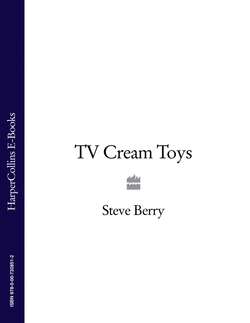Читать книгу TV Cream Toys Lite - Steve Berry - Страница 30
Commodore 64 Breadbin-shaped family computer
ОглавлениеOften, the first computer to grace the family home would not be bought as a present for the kids but would be borrowed as another toy for a tinkering dad. Commodore Business Machines had already dangled their PET, one of the top ‘take home from work for the weekend’ computers, in front of inquisitive parents across the globe, but it was with the introduction of the VIC-20 and Commodore 64 in the very early ’80s that they cornered the younger (i.e. games-obsessed) micro market.1
More eccentrically named than their closest competitors, Commodore computers also pretty much outclassed any in their price range. As any owner wouldn’t tire of banging on about, the C64 had much better–that is to say, more arcade-like–graphics than the Spectrum, thanks to something called ‘sprites’.2 Its sound chip was also more sophisticated, leading some very zingy music to accompany the on-screen action rather than the usual bleeps and boops.
On top of that, the C64 also had a purpose-built matching cream lozenge colour-scheme tape deck or floppy disk drive, a ‘proper’ keyboard and that extra wodge of actually-not-very-important-in-the-event DRAM memory (a full 16K more than the 48K Spectrum–still some 6000 times less powerful than the average 3G mobile phone). But it did mean that a few classic programs were unique to what modern technologists would deem ‘the platform’: Dig Dug, Gilligan’s Gold and the assault-on-Hoth-apeing Attack of the Mutant Camels to name but three.3
The BBC Micro Computer programming
More than any other micro, though, the C64 was positioned as a grown-up’s office tool with all kinds of spreadsheet, word-processing and accounts applications available. All that processing power! However, once computer and accompanying colour portable telly took up residence in the spare room, so did we. Come on, it was 1982! We could close the curtains, watch the first edition of The Tube on Channel 4 and then play Defender’til bedtime. You can catalogue your record collection later, Dad.
See also ZX Spectrum, Binatone TV Master
Worthy, wealthy households instead chose to purchase the distinctly public service remit BBC Model B, which at least had a couple of Sunday-morning computer-literacy TV shows to back it up–although precious little in the way of games at first. Price wars and a failure to keep up with the increased specifications in the industry did for most of these machines in the end. Time has been kind, however, and a thriving retro scene keeps emulated versions of the C64 and all its contemporaries alive online somewhere out there on the Internet4
1 Atari and Apple were starting to enter the home-computer market in the States, but in the UK it was pretty much a straight fight between Commodore and Sinclair. Largely ignored pretenders to the throne included Oric, Dragon and Jupiter. They were right ones for making their products sound like something out of The Lord of the Rings, these computer manufacturers, eh?
2 We could come over all technical now and go on about attribute clashes and scrolling, but our workable knowledge of C64 BASIC begins and ends with the PEEK and POKE commands. To be honest, we don’t really know what they’re for either, but they sound funny.
3 In fact, rumour has it that the C64 was initially developed to serve as a simple reusable arcade cabinet engine–i.e. an upgradeable games machine–and not intended for the home market at all.
4 And in the real world. A ‘plug and play’ joystick-sized version of the C64, with thirty games included, will set you back less than £15 at Amazon. Age 5+. Bah.
